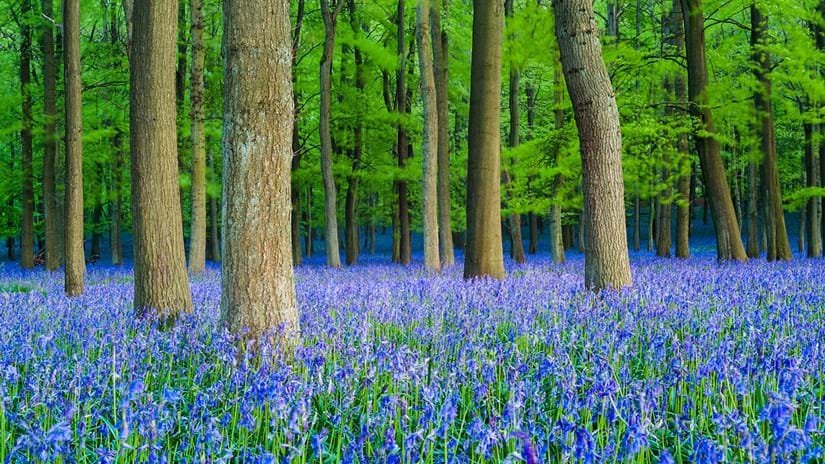The bluebells have appeared in my garden.
On this (U.S.) side of the Atlantic, they are Mertensis virginica, Virginia Bluebells, a spring ephemeral, native to moist woodland, most commonly found on river floodplains and in bottomland.
They join the other fleeting flowers of spring: the frothy forget-me-nots, the deep blue stars of periwinkle, the china blue hyacinths, and near-purple grape hyacinths. Why are so many spring flowers blue, I wonder? Perhaps they are celebrating the fresh spring sky.
I planted the bluebells in my garden in honor of my dad.
On his (U.K.) side of the Atlantic, the native bluebell is the English bluebell, Hyacinthoides non-scripta. It too likes dark, moist woodlands, and – together with wild garlic and primroses - is considered a marker of ancient woodland, defined as land on which woodland cover has persisted since 1600. The decaying leaves of centuries have enriched the soils, such that species of invertebrates and fungi that can be found nowhere else thrive in ancient woodland.
When I was young, Dad and I used to walk to Deborah Wood to see the bluebells carpeting the ground. To me, it was a magical place, its shadows full of surprises, like the red fox we saw one day. On summer evenings, we’d hear a cuckoo call from within its damp dimness.
In the weeks before Dad died, I’d walk the farm lanes that he and I had walked so many times, and often I’d find myself in Deborah Wood, searching for the bluebells, lines from T.S. Eliot running through my head:
“April is the cruellest month, breeding
Lilacs out of the dead land, mixing
Memory and desire, stirring
Dull roots with spring rain.”
The landscape had changed since I was a child, the hedgerows which used to border the lanes ripped out in the pursuit of near-surface coal deposits. Dad had fought the proposal for open-cast mining, using data on species diversity to show that the hedgerows were over 300 years old. But nothing was allowed to stand in the way of progress; I’m just grateful that Deborah Wood and its bluebells survived.
In lockdown in the U.K., in spring 2020, I walked each day up the stream behind my house in Weardale. The footpath passes through a narrow strip of ancient woodland, and I marked the passage of time through the successive flowering of primroses, violets, and wild garlic. Until one day, in a shady spot where spring water dripped down the rocks that marked an old quarry, I found a clump of wild bluebells, and knew that I’d found a resting place for some of Dad’s ashes.
English Bluebells in ancient woodland

